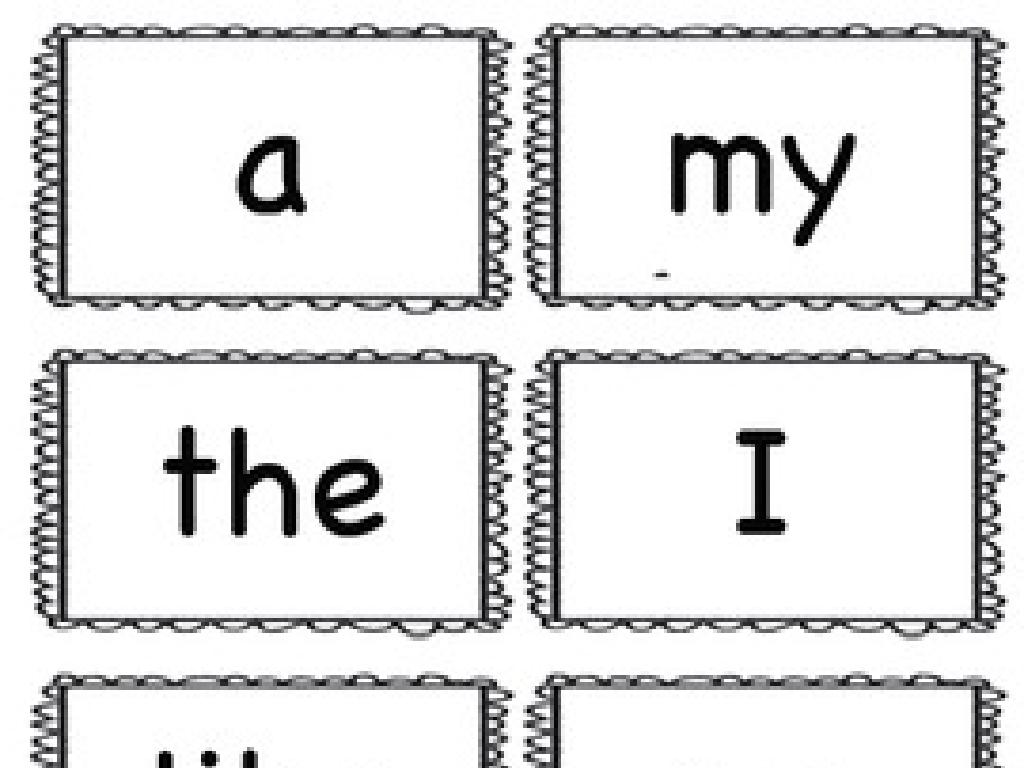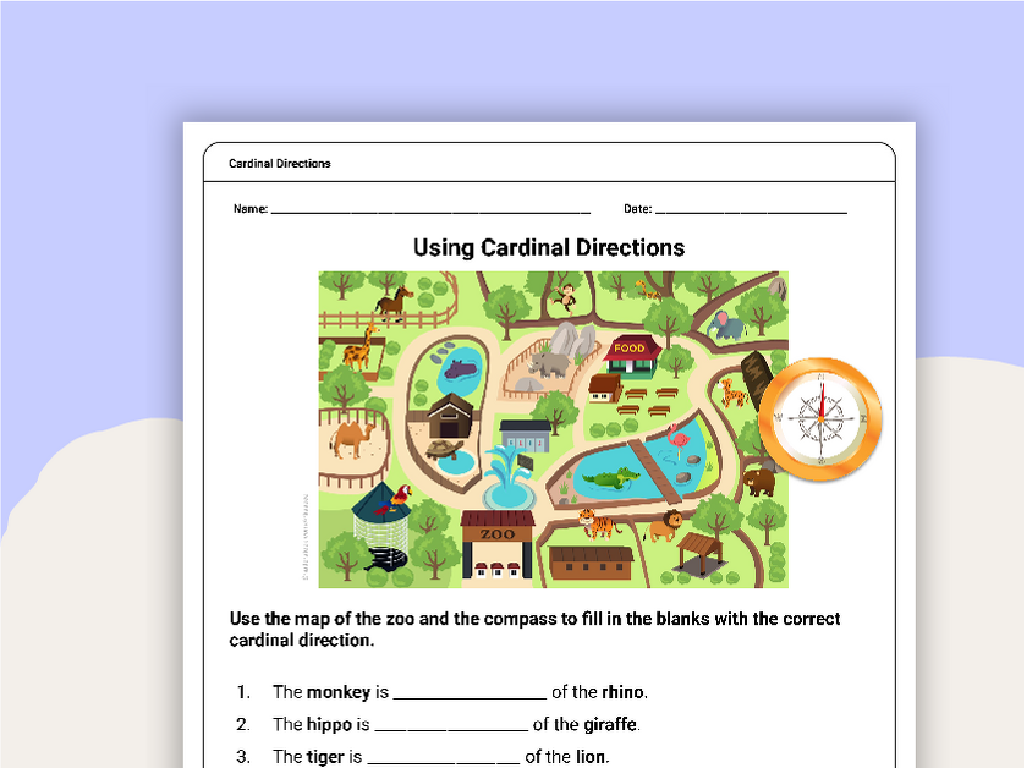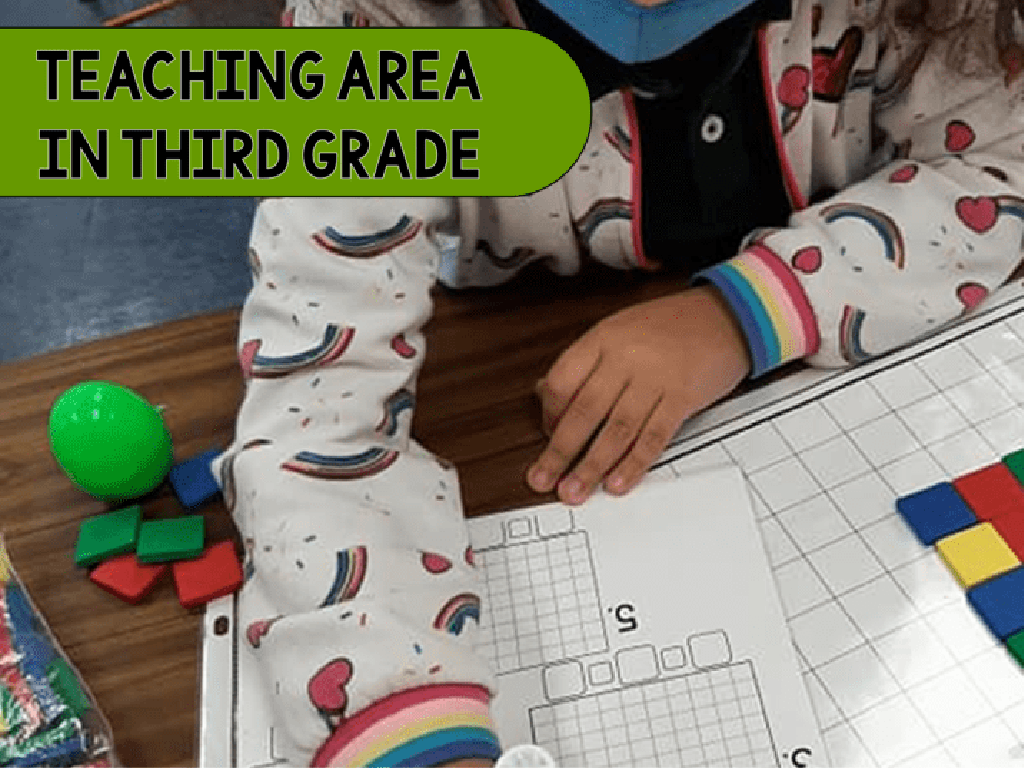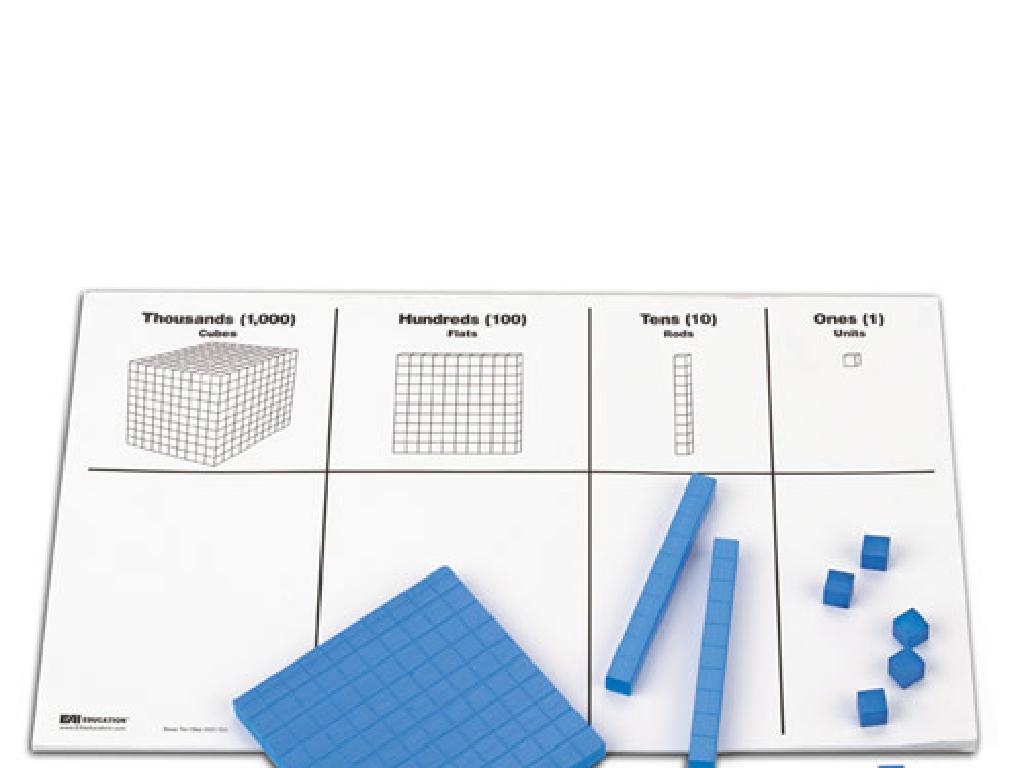Which X Satisfies An Equation?
Subject: Math
Grade: Eighth grade
Topic: One-Variable Equations
Please LOG IN to download the presentation. Access is available to registered users only.
View More Content
Solving One-Variable Equations
– Basics of one-variable equations
– An equation with one unknown, typically ‘x’, that we aim to find.
– Definition: solving an equation
– To solve an equation means to find the value of ‘x’ that makes the equation true.
– Characteristics of one-variable equations
– They have one variable and can be solved in one step or multiple steps.
– Practice with example equations
– Example: Solve x + 3 = 10. Here, x = 7 because 7 + 3 equals 10.
|
This slide introduces students to the concept of one-variable equations, which are the foundation of algebra. Start by explaining that these equations contain only one unknown variable that we need to solve for. Emphasize that solving an equation is like solving a puzzle we want to find the value of ‘x’ that makes the equation true. Provide examples of simple one-variable equations and walk through the steps to solve them. Encourage students to practice with additional examples and to check their solutions by substituting the value of ‘x’ back into the original equation.
Identifying Solutions to Equations
– Define a solution to an equation
– A solution makes the equation true when substituted for ‘x’
– Criteria for ‘x’ being a solution
– If substituting ‘x’ results in a true statement, it’s a solution
– Process to check if ‘x’ satisfies
– Substitute ‘x’ into the equation and simplify to check
– Practice with example equations
– Use equations like 2x + 3 = 7 to apply the checking process
|
This slide introduces the concept of a solution to an equation in the context of one-variable equations. A solution is a value that, when substituted for the variable ‘x’, makes the equation true. To determine if a given value is a solution, students should substitute the value into the equation and perform the necessary arithmetic operations. If both sides of the equation are equal after the substitution, then the value is indeed a solution. Provide several practice problems for students to apply this process, such as 2x + 3 = 7, and guide them through checking if x = 2 is a solution. Encourage students to explain their reasoning and show their work step by step.
Methods to Solve One-Variable Equations
– Trial and Error approach
– Guess a solution, plug it in, and check
– Inverse Operations technique
– Use opposite operations to isolate x
– Balancing the Equation
– Keep the equation balanced by doing the same to both sides
|
This slide introduces students to various methods for finding the value of x that satisfies an equation. The trial and error method involves making educated guesses for the value of x and checking if the equation is satisfied. Inverse operations use the opposite mathematical operation to move terms from one side of the equation to the other, isolating the variable x. Balancing equations requires performing the same operation on both sides of the equation to maintain equality while solving for x. Encourage students to practice each method with different equations to understand which method works best in various scenarios. Provide examples for each method and allow students to attempt solving equations using these techniques.
Practice Problems: Solving for x
– Solve x + 5 = 12
– Subtract 5 from both sides to find x.
– Find x in 2x – 3 = 7
– Add 3 to both sides, then divide by 2.
– Determine x for 4x + 1 = 2x + 9
– Subtract 2x from both sides, then subtract 1.
|
This slide presents students with practice problems to apply their knowledge of solving one-variable equations. For the first equation, guide students to isolate x by performing inverse operations, starting with subtraction. In the second problem, they should add 3 to both sides to cancel out the -3, and then divide by 2 to solve for x. The third problem requires students to first eliminate the 2x from the right side by subtracting 2x from both sides, and then isolate x by subtracting 1 from both sides. Encourage students to work through these problems step-by-step and check their answers by plugging the value of x back into the original equations. Provide additional similar problems for students who finish early or need extra practice.
Class Activity: Equation Relay Race
– Split into teams for the relay
– Each member solves a step
– Pass your work to the next person
– First team to finish wins!
|
This activity is designed to encourage collaboration and quick thinking as students work together to solve equations. Divide the class into small teams, and give each team a set of equations. Each student in the team is responsible for solving one step of the equation before passing it on to the next team member. This continues until the equation is solved. The first team to solve their set of equations correctly wins the relay. Make sure to prepare different sets of equations for each team to prevent copying and to cater to different skill levels. Possible equations could include solving for x in simple linear equations, such as 2x + 3 = 11, or more complex ones involving fractions or decimals. Monitor the teams to ensure that each member is participating and to confirm the accuracy of the final answers.





-satisfy-an-equation/basic_two_variable_equations.png)
